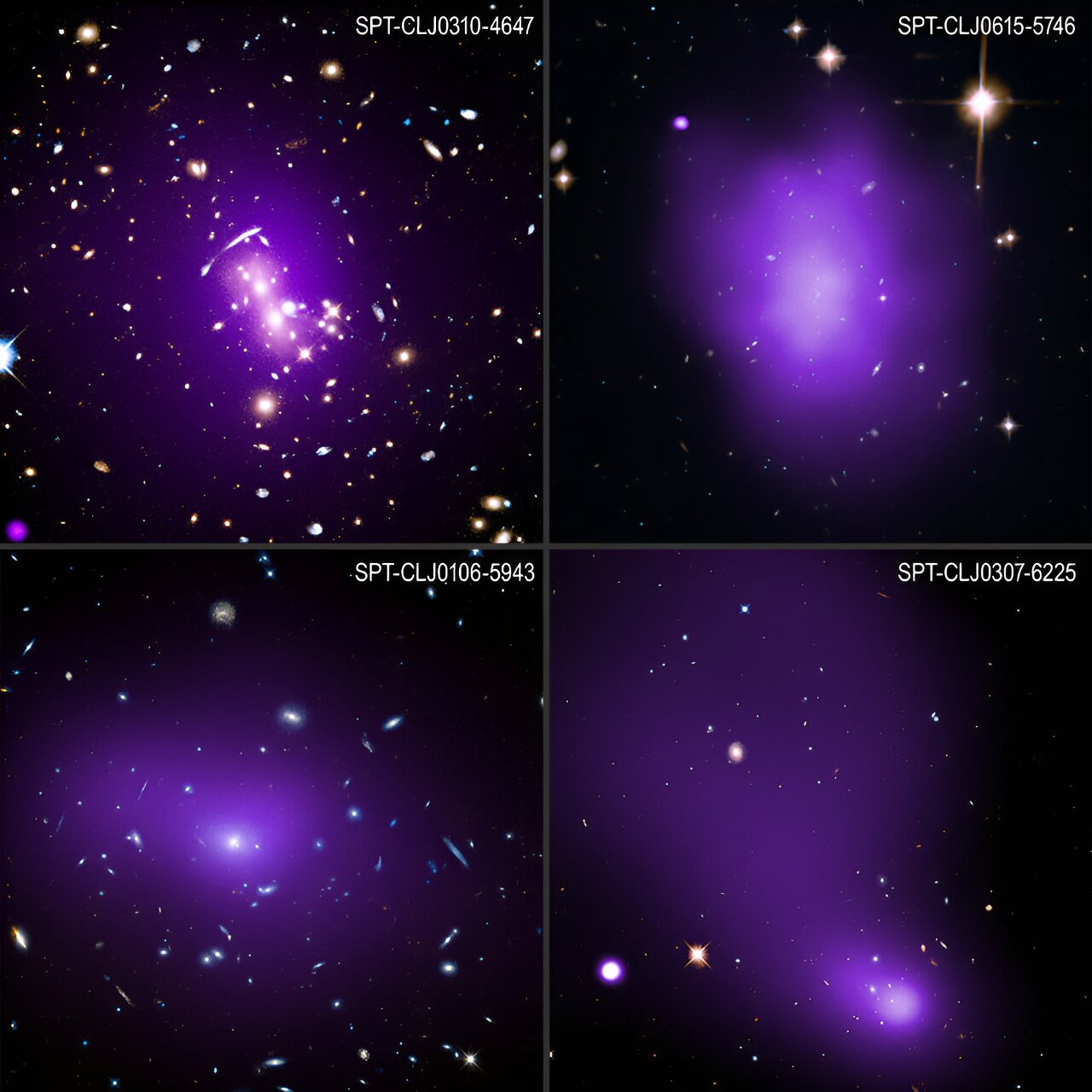Astronomers have conducted a comprehensive study using NASA’s Chandra X-ray Observatory and other telescopes to investigate the factors that trigger star formation in the largest galaxies in the universe. Surprisingly, they discovered that the conditions for stellar conception in these immensely massive galaxies have remained unchanged for the past ten billion years.
Galaxy clusters, which are held together by gravity and consist of vast amounts of hot gas visible in X-rays, are the largest objects in the universe. The mass of this hot gas exceeds the combined mass of all the stars in the hundreds of galaxies typically found within galaxy clusters.
Calzadilla and his colleagues focused on studying the brightest and most massive category of galaxies known as brightest cluster galaxies, located at the centers of 95 galaxy clusters. These galaxy clusters were selected as an extreme sample, representing the most massive clusters in a large survey conducted using the South Pole Telescope (SPT). They are situated between 3.4 and 9.9 billion light-years away from Earth.
The research team discovered that star formation in the galaxies they examined is triggered when the level of disordered motion in the hot gas, referred to as “entropy,” falls below a critical threshold. Once this threshold is reached, the hot gas inevitably cools down and gives rise to the formation of new stars.
“It’s remarkable to think that a single numerical value can determine whether billions of stars and planets were formed in these colossal galaxies, spanning billions of years,” stated co-author Michael McDonald, who is also affiliated with MIT.
2024-01-15 04:00:04
Original from phys.org rnrn


















